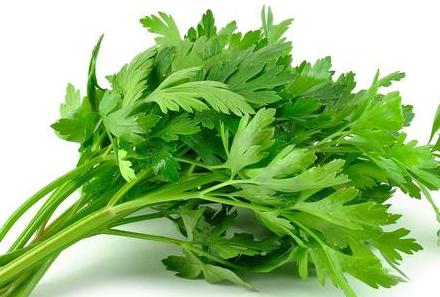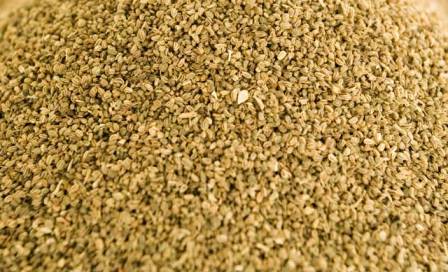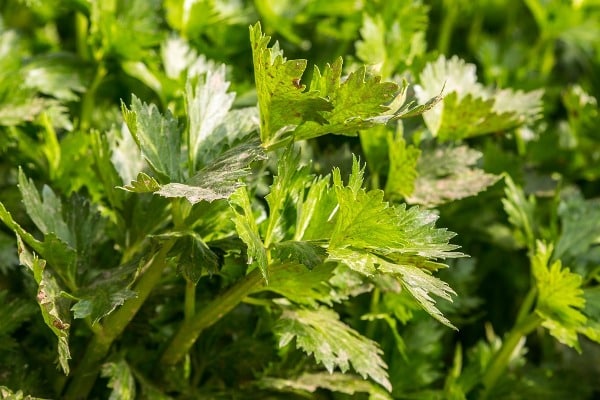Celery Growing Guide:
Today, we learn the topic of celery growing techniques, ideas, and tips.
Introduction to Celery:
Celery is one of the popular growing salad leafy crops in the world. Basically, celery is a Mediterranean herb and brought into cultivation in France and England during the 16th century. Later its cultivation spread most of the regions in the world. Celery is mostly grown in home gardens, indoors, pots, and containers. Commercial cultivation of celery can be carried out in open fields, polyhouse, greenhouse and even hydroponically. Celery is a hardy biennial plant but occasionally becomes an annual plant. When it comes to planting description, celery has dark green foliage with less developed stalks & swollen roots.
Celery is being grown for two purposes:
- For its fleshy green leafstalk used as a vegetable (mostly in salads)
- Seeds which yield essential oil. ( The celery is usually grown as a winter annual crop for its seed and seed oil. The celery seeds contain about 2 to 2.5 % of essential oil and 16 to 17% of fatty oil).
Let us discuss more Celery Growing in the upcoming sections.
Scientific Name / Botanical Name of Celery:
Apium graveolens.
Family Name of Celery:
Apiaceae.
Genus of Celery:
Apium.
Common Names of Celery or Other Country Names:
The following are celery names in other country languages.
- Afrikaans – seldery.
- Dutch – Snijselderij.
- German – Sellerie.
- Polish – Seler.
- Albanian – Selinoja.
- Estonian – Seller.
- Greek – Selino.
- Irish – Soilire.
- Korean – sellŏri/셀러리.
- Maltese – karfusa.
- Nepali – Ajavā’ina.
- Portuguese – Aipo.
- Spanish – Celery.
- Arabic – Karfas
- Bulgarian – Celina.
- Filipino – Kintsay
- Italian – Sedano.
- Norwegian – Selleri.
- Thai – Khuen chai.
- Vietnamese – Cần tây.
- Armenian – Lakhod Garos.
- Burmese – Chinese Cilantro.
- Croatian – Celer.
- Finnish – Selleri.
- Hebrew – Karpass rehani.
- Japanese – Serori.
- Latvian – Selerija.
- Romanian – ţelină.
- Sinhalese – සැල්දිරි.
- Cambodian – ជីរវ៉ាន់ស៊ុយ.
- Czech – Celer řapíkatý.
- French – Céleri.
- Macedonian – Celer.
- Swedish – Selleri.
- Turkish – Kereviz.
- Cantonnese – 芹菜.
- Danish – Selleri.
- Georgian – Niakhuri.
- Hungarian – Zeller.
- Malay – Daun Saderi.
- Persian – karafs.
- Taiwanese – Cần tây.
- Sanskrit – Ajamoda.
Celery in Indian Languages:
The following are local Celery names in India.
Hindi – अजमोदा (Ajamōdā).
Tamil – Oma Ilai/ சிவரிக்கீரை.
Malayalam – അയമോദകം.
Telugu – Vamaku.
Marathi – Ajmod.
Kananda – oma.
Gujarati – Ajamo.
Urdu – Ağmwd.
Health Benefits of Celery:
Some of the health benefits of Celery vegetable are as follows.

- It helps to lower Cholesterol levels in the blood.
- Celery has properties of lowering inflammation.
- Celery helps in treating high blood pressure.
- Regular consumption of celery may help in preventing ulcers.
- It is good for liver health.
- It can protect from certain types of cancers.
- Celery can help with weight loss.
- It can boost digestion and reduces bloating.
- Celery can prevent urinary tract infections.
- Fights infection.
Varieties/Types (Cultivars) of Celery:
You can find green and yellow or self blenching cultivars (varieties). Some of the popular varieties include
- Giant Pascal.
- Emperor of Jeen.
- Golden Self blanching.
However, there are many hybrid and commercially improved varieties specific to the region. You can consult the local department of horticulture for suitable cultivar for your region.
Climate Requirement for Celery Herb:
Celery requires longer days with cool season along with moderate annual rainfall during the growing season. This crop cannot tolerate severe cold and can expect good yields under plenty of sunshine, warm days, cool nights and low humid conditions.
Soil Requirement for Celery :
Soil plays a major role in any crop cultivation. In the case of celery growing, it requires well-drained soil rich in organic matter with a soil pH range of 6.0 to 6.5 for higher-yielding of produce. However, it does thrive well above 6.5 pH value. As soil pH influences the crop growth and yield, If soil pH falls under 4.0, you may apply dolomite of 2.5 tonnes/ha to the soil 5 to 6 months before the cultivation of the crop. Commercial celery growers should go for a soil test to find out the soil suitability and any nutrient, micro-nutrient deficiencies of the soil should be supplemented before sowing the seed.
Read: How to Grow Mint.
Land Preparation for Celery Sowing:”
Land should be plowed a couple of times to bring the soil to fin tilth stage. Remove any stones/rocks/clods/any other weeds. Supplement the soil with 15 to 20 tonnes of well-decomposed farmyard manure in the last plow. Ensure soil is levelled and the channels are formed for water draining.
Propagation of Celery Plants:
Celery crop is propagated through seeds. Seeds can be directly sown in the field or transplanted seedlings from nursery beds. As celery seeds are very small, mix with 10 times more sand and before sowing in the nursery bed.

Seed Rate, Season, Sowing, and Spacing of Celery Plants:
Seed rate depends on planting method and variety. On average, 1-hectare land requires about 500 grams of seeds. In case of the nursery growing and to transplant later in the field, it requires 100 to 125 square-foot nursery with 1-meter width, 15 cm height and length to produce 1-hectare seedlings. As part of seed treatment, you may soak the celery seeds in Panchagavya solution (made with cow urine) and dry them in a shade before sowing on nursery beds. If you are growing on nursery beds, ensure to irrigate the nursery beds frequently (once in 2 days. Usually, it takes 20 to 25 days to germinate the celery seeds. You can transplant 50 to 60 days grown seedling in the main field. When it comes to the season of growing, In Asian countries, most farmers grow this under rainfed conditions. However, it can be grown through the year provided there is sufficient irrigation is available. Protected environments like greenhouse/polyhouse/shade nets can be used to grow throughout the year. The seedlings raised on nursery beds should be transplanted after about 60 days to a spacing of 45 cm x 15 cm or 60 cm X 15 cm. Care should be taken while planting the seedlings as deeper planting may damage the roots. 60 days old seedlings with 12 to 15 cm height and 7 to 8 cm root growth are preferred to transplant in the main field.
Note: Planting season may vary from region to region.
Irrigation for Celery Plants:
Celery crop requires ample amounts of water throughout its growth period. Ensure soil is always in a moist condition. The crop should be given irrigation at fortnightly (2 weeks) intervals in the early part and weekly nearing seed maturity. In case of heavy rains, the soil should be capable of draining the water.
Intercultural Operations in Celery Crop:
2 to 3 weeding should be carried out to control the weeds. Shallow hoeing should be done as the roots are present at the top layer of the soil. Use of baseline of 2 to 2.5 liter/ha as a pre-emergence application to control early weed growth.
Manures and Fertilizers for Celery Plants:
Manures and fertilizers play a great role for higher yields. Apart from the farmyard manure mentioned during land preparation, 100-150 kg of N/ha (in 3 splits), P2O5 and K2O. 1/3 of N, together with P2O5 and K2O at 40 to 60 kg/ha should be applied.
There are some growth regulates which can be applied as follows:
- Should spray panchakavya 3% solution 4 times at intervals of 2 weeks.
- Pre-harvest spray of 10% earthworm infusion 4 times at 2 weeks interval.
- Should spray bio-herbal manure of 5kg/ha mixed with 200 liters of water at 45, 60 & 75 days intervals.
Read: Prawn Cultivation Guide.
Pests and Diseases of Celery:
Pest and disease control is a very important task in any crop cultivation. This will ensure healthy produce and high yields.
- Pests: The common insect pests found in celery growing are Leaf miner, Carrot weevil and Aphids. For symptoms and control measures of these pests, consult horticulture professional.
- Diseases: The common diseases found in celery growing are Fusarium, early and late blight, yellow rot, pink rot, celery mosaic, and aster yellow. For symptoms and control measures of these diseases, consult horticulture professional.
Note: Your local department of horticulture is a good source of finding information about pests and diseases in Celery Growing. Don’t experiment on your own without knowing the symptoms and causes.
Harvesting of Celery:

The celery crop matures or ready for harvest in 120 to 130 days after sowing depending on the variety grown. Each plant should be cut just below the surface with a sharp sickle. The plants should be trimmed and prepared for transport to the local market.
Marketing of Celery:
Celery stalks may be packaged into cartons which can hold about 40 to 50 stalks and weigh up to 26 kg. In the case of the export market, under optimal conditions, this leafy vegetable can be stored for up to 7 weeks between 32 to 36 °F (0 to 2 °C). Freshly harvested celery stalks can be transported to local vegetable markets or the crop can be sold in bulk to any vegetable vendor. Some people even sell their produce at the farm gate.
The yield of Celery:
Well, in agriculture and horticulture sectors, the yield of any crop is purely dependent on certain factors such as soil type or fertility, climate, irrigation, planting method, variety, and other garden management practices. However, under ideal growing conditions of celery, one can obtain a yield of 25 to 30 tonnes/ha.

Useful and thorough information on the subject. Thank you.